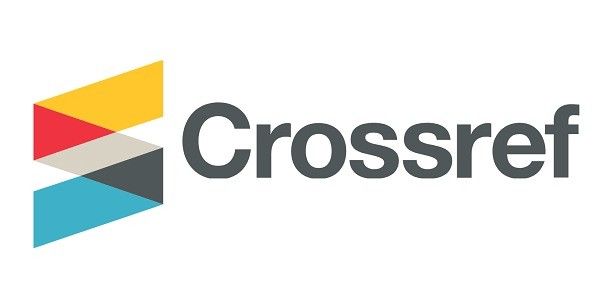Abstract
In March 2020, the World Health Organization officially announced the COVID-19 outbreak as a global Pandemic (WHO, 2020). During this time, the United Arab Emirates (UAE) introduced national preventative measures to slow the spread of the deadly virus by announcing the closure of schools and higher education institutions, and the commitment of online learning. Teaching faculty at the College of Arts and Creative Enterprises (CACE) at Zayed University were suddenly facing the challenge of teaching design through a distance learning approach. As educators of interior design, the authors were part of the team tasked to find ways to teach design without physical contact with the students nor access to campus facilities traditionally used to run the program and its associated courses. This paper charts the pedagogy approach that the authors adopted as a response to the national lockdown. As design faculty, the authors felt that, despite the restrictions imposed on society because of COVID-19 pandemic, it was still possible to explore other alternatives for a particular course, the senior capstone project. The main intention was to successfully fulfil the course learning outcomes and provide students with a suitable pedagogy continuity to the learning process commenced prior to the lockdown.
Publication Date
7-30-2020
References
Abdelhameed, W. A. (2013). Virtual reality use in architectural design studios: A Case of studying structure and construction. Procedia Computer Science, 25, 220–230. https://doi.org/10.1016/j.procs.2013.11.027
Abulrub, A.-H. G., Attridge, A. N., & Williams, M. A. (2011). Virtual reality in engineering education: The future of creative learning. 2011 IEEE Global Engineering Education Conference (EDUCON), 751–757. https://doi.org/10.1109/EDUCON.2011.5773223
AIAS. (2018, April 11). AIAS and NAAB partner to promote healthy studio culture. Retrieved from http://www.aias.org/aias-and-naab-partner-to-promote-healthy-studio-culture/
Bachelor Studies (2020a). Distance learning Bachelor Programs in Architecture 2020. Retrieved from https://www.bachelorstudies.com/Bachelor/Architecture/Distance-learning/
Bachelor Studies (2020b). Distance learning Bachelor Programs in Interior Design 2020. Retrieved from https://www.bachelorstudies.com/Bachelor/Interior-Design/Distance-learning/
Bitzer, D. L. (1986). The PLATO project at the University of Illinois. Engineering Education, 77(3), 175–80.
Boys, J. (2010). Towards creative learning spaces: Re-thinking the architecture of post-compulsory education. London: Routledge.
Brothers, D., & Wendell, A. (2016). Design Films: Implementing video creation techniques into undergraduate design education. Parametricism vs. Materialism: Evolution of Digital Technologies for Development, 8th ASCAAD Conference Proceedings, 321–330.
Chow, S., & Chan, K. (2009). Reconstruction of photorealistic 3D model of ceramic artefacts for interactive virtual exhibition. Journal of Cultural Heritage, 10(2), 161–173. https://doi.org/10.1016/j.culher.2008.08.011
Conaway, R. N., Easton, S. S., & Schmidt, W. V. (2005). Strategies for enhancing student interaction and immediacy in online courses. Business Communication Quarterly, 68(1), 23–35. https://doi.org/10.1177/1080569904273300
Corcoran, F., Demaine, J., Picard, M., Dicaire, L., & Taylor, J. (2002). Inuit3d: An interactive virtual 3d web exhibition. Museums and the Web, 18–20.
Crowther, P. (2013). Understanding the signature pedagogy of the design studio and the opportunities for its technological enhancement. Journal of Learning Design, 6(3), 18–28. https://doi.org/10.5204/jld.v6i3.155
Datta, A. (2007). Gender and learning in the design studio. Journal for Education in the Built Environment, 2(2), 21–35. https://doi.org/10.11120/jebe.2007.02020021
Dutton, T. A. (1987). Design and studio pedagogy. Journal of Architectural Education, 41(1), 16–25. https://doi.org/10.1080/10464883.1987.10758461
Dwayne, C. D., & William, M. J. (1999). The University of Louisville. Lexington: University Press of Kentucky.
Etheredge, C., Kunst, E., & Sanders, A. (2013). Harnessing the GPU for real-time haptic tissue simulation. Journal of Computer Graphics Techniques, 2(2), 28–54.
Evans, L. (2018). The re-emergence of virtual reality. London: Routledge.
Fisher, T. (2000). In the scheme of things: Alternative thinking on the practice of architecture.Minneapolis, MN: University of Minnesota Press.
Fleischmann, K. (2016). Peer assessment: A learning opportunity for students in the creative arts. In C. Nygaard, J. Branch, P Bartholomew (Eds.), Assessing Learning in Higher Education (pp. 45–58). Faringdon: Libri.
Fox, J., Mourtada-Sabbah, N., & Al-Mutawa, M. (2006). Globalization and the gulf. London: Routledge.
Gębczyńska-Janowicz, A. (2020). Virtual reality technology in architectural education. World Transactions on Engineering and Technology Education, 18, 24–28.
Garcia, A., Marquez, J., & Valverde Vildosola, M. (2001). Qualitative contribution of a VR-system to architectural design: why we failed? Proceedings of 6th Conference on Computer-Aided Architectural Design Research in Asia, 423–428.
Great Value Colleges (2020). 6 most affordable bachelor’s in architecture online for 2020. Retrieved from https://www.greatvaluecolleges.net/rankings/online-bachelors-architecture/
Groat, L. N., & Ahrentzen, S. (1996). Reconceptualizing architectural education for a more diverse future: Perceptions and visions of architectural students. Journal of Architectural Education, 49(3), 166–183. https://doi.org/10.1080/10464883.1996.10734679
Gropius, W. (1965). The new architecture and the Bauhaus (P. Morton Shand, Trans.). Cambridge, MA.: MIT Press. (Original work published 1935)
Gropius, W. (1968). Apollo in the democracy: The cultural obligation of the architect. New York: McGraw-Hill.
Guide To Online Schools. (2020). Complete guide to an online architecture degree. Retrieved https://www.guidetoonlineschools.com/degrees/architecture
Harasim, L. (1987). Teaching and learning on-line: Issues in computer-mediated graduate courses. Canadian Journal of Educational Communication, 16(2), 117–135.
Hartley, J., & Davies, I. (1978). Note-taking: A critical review. Programmed Learning and Educational Technology, 15(3), 207–224. https://doi.org/10.1080/0033039780150305
Jason, L. A., Gruder, C. L., Martino, S., Flay, B. R., Warnecke, R., & Thomas, N. (1987). Work site group meetings and the effectiveness of a televised smoking cessation intervention. American Journal of Community Psychology, 15(1), 57–72. https://doi.org/10.1007/BF00919757
Jones International University (n.d.). Retrieved from http://www.jiu.edu/
Kabadayi, L. (2012). The role of short film in education. Procedia-Social and Behavioral Sciences.https://doi.org/10.1016/j.sbspro.2012.06.657
Kalisperis, L., Otto, G., Muramoto, K., Gundrum, J., Masters, R., & Orland, B. (2002). Virtual reality/space visualization in design education: The VR-desktop initiative. 20th eCAADe Conference Proceeding, 64–71.
Kieferle, J. B., & Herzberger, E. (2002). Digital year for architects experiences with an integrated teaching concept. 20th eCAADe Conference Proceeding, 88–95.
Kvan, T. (2001). The pedagogy of virtual design studios. Automation in Construction, 10(3), 345–353. https://doi.org/10.1016/S0926-5805(00)00051-0
Lang, S., & Hovestadt, L. (2003). An architectural framework within a spatially immersive real-time environment for advanced communication and collaboration. 21th eCAADe Conference Proceeding, 37–43.
Lanier, J. (1992). Virtual reality: The promise of the future. Interactive Learning International, 8(4), 275–79.
Lee, J. W. (2006). The world health report: Working together for health. Geneva: World Health Organization. Retrieved from http://www.who.int/whr/2006/en/
Lueth, P. (2008). The architectural design studio as a learning environment: a qualitative exploration of architecture design student learning experiences in design studios from first-through fourth-year. Iowa: Iowa State University.
McCarthy, S., & De Almeida, C. M. (2002). Self-authored graphic design: A strategy for integrative studies. Journal of Aesthetic Education, 36(3), 103–116.
McClean, D. (2009). Embedding learner independence in architecture education: Reconsidering design studio pedagogy. PhD thesis, Robert Gordon University.
Mikropoulos, T. A., & Natsis, A. (2011). Educational virtual environments: A ten-year review of empirical research (1999–2009). Computers & Education, 56(3), 769–780. https://doi.org/10.1016/j.compedu.2010.10.020
Milovanovic, J., Moreau, G., Siret, D., & Miguet, F. (2017). Virtual and augmented reality in architectural design and education: An immersive multimodal platform to support architectural pedagogy. Future Trajectories of Computation in Design, 17th International Conference CAAD Futures.
Mohammed, M. F. (2017). Blended e-learning in the architectural design studio: An experimental model. International Journal of Parallel, Emergent and Distributed Systems, 32(1), S73–S81. https://doi.org/10.1080/17445760.2017.1390103
Nerdinger, W. (1985). Walter Gropius: The architect Walter Gropius drawings, prints and photographs from Busch-Reisinger Museum, Harvard University Art Museums, Cambridge/Mass.And from Bauhaus-archives, Berlin. With complete project catalogue. Cambridge. MA: Busch-Reisinger Museum.
Okechukwu, O. M., & Eze, F. U. (2011). Understanding virtual reality technology: advances and applications. Advance in Computer Science and Engineering, 53–70. https://doi.org/10.5772/15529
Online Schools Center (2020). Best online schools for Bachelor Architecture degrees 2020. Retrieved from https://www.onlineschoolscenter.com/best-bachelor-architecture/
Orhun, S. (2014). A case study to make use of cross-channel user experience for interactive exhibition design. In H. Gottlieb & M. Szelag (Eds.), Engaging Spaces: Interpretation, Design and Digital Strategies (pp. 225-231). Warsaw: Nodem.
Ran, Y., & Wang, Z. (2011). Virtual and augmented reality applications in industrial design. International Conference on Machine Learning and Computing, 252–253.
RIBA. (2014). RIBA validation. Retrieved from https://www.architecture.com/education-cpd-and-careers/riba-validation/
Roehl, A., Reddy, S., & Shannon, G. (2013). The flipped classroom: An opportunity to engage millennial students through active learning strategies. Journal of Family & Consumer Sciences, 105(2), 44–49.
Saghafi, M. R., Franz, J., & Crowther, P. (2012). Perceptions of physical versus virtual design studio education. International Journal of Architectural Research, 6(1), 6–22.
Salama, A., & El-Attar, M. (2010). Student perceptions of the architectural design jury. Archnet-IJAR: International Journal of Architectural Research, 4(2–3), 174–200. https://doi.org/10.26687/archnet-ijar.v4i2/3.104
Schön, D. A. (1987). Educating the reflective practitioner:Toward a new design for teaching and learning in the professions. California: Jossey-Bass.
Schweibenz, W. (2019). The virtual museum: an overview of its origins, concepts, and terminology. The Museum Review, 4(1).
Sharji, E., Peng, F., & Woods, P. (2013). Experiencing interactive exhibition spaces. 2013 International Conference on Informatics and Creative Multimedia, 330–334.
Sherman, W. R., & Craig, A. B. (2018). Understanding virtual reality: Interface, application, and design.San Francisco, CA: Morgan Kaufmann.
Shulman, L. (2005). Signature pedagogies in the professions. Daedalus, 134(3), 52–59.
Stewart, A. (2019, July 28). Abu Dhabi named second-most-cultural city in the world by Skyscanner. The National: Arts and Culture. Retrieved from https://www.thenational.ae/arts-culture/abu-dhabi-named-second-most-cultural-city-in-the-world-by-skyscanner-1.891589#:~:text=Abu%20Dhabi%20made%20it%20to,capital%20of%20Italy's%20Tuscany%20region
Stratigakos, D. (2016). Where are the women architects? Princeton: Princeton University Press.
Su, C., Yen, B., & Zhang, X. (1998). An internet based virtual exhibition system: Conceptual design and infrastructure. Computers & industrial engineering, 34(3–4), 615–618. https://doi.org/10.1016/S0360-8352(98)00172-7
The Open University of Catalonia (n.d.). Retrieved from https://www.uoc.edu/portal/en/index.html
The Open University (n.d.). Retrieved from http://www.open.ac.uk/
Ubell, R. (2016, December 13). Advice for faculty members about overcoming resistance to teaching online. Inside Higher Ed. Retrieved from https://www.insidehighered.com/advice/2016/12/13/advice-faculty-members-about-overcoming-resistance-teaching-online-essay
vdf. (2020). Dezeen. Retrieved from https://www.dezeen.com/vdf/schools/
Webster, H. (2006). A Foucauldian look at the design jury. Art, Design & Communication in Higher Education, 5(1), 5–19. https://doi.org/10.1386/adch.5.1.5_1
Webster, H. (2008). Architectural education after Schön: Cracks, blurs, boundaries and beyond. Journal for Education in the Built Environment, 3(2), 63–74. https://doi.org/10.11120/jebe.2008.03020063
WHO. (2020). Coronavirus disease 2019 (COVID-19) situation report 52. Retrieved from https://www.who.int/docs/default-source/coronaviruse/situation-reports/20200312-sitrep-52-covid-19.pdf?sfvrsn=e2bfc9c0_4
Wojtowicz, J. (1995). Virtual design studio (Vol. 1). Hong Kong: Hong Kong University Press.
Zayed University (n.d.). College of Arts and Creative Enterprises. Retrieved from https://www.zu.ac.ae/main/en/colleges/colleges/__college_of_arts_and_creative_enterprises/index.aspx
Submitted Date
2020-05-30
Accepted Date
2020-07-15
First Page
163
Last Page
184
Recommended Citation
Ahmad, L., Sosa, M., & Musfy, K. (2020). Interior Design Teaching Methodology During the Global COVID-19 Pandemic. Interiority, 3 (2), 163-184. https://doi.org/10.7454/in.v3i2.100
Creative Commons License

This work is licensed under a Creative Commons Attribution-NonCommercial 4.0 International License
Author(s) retain the copyright of articles published in this journal, with first publication rights granted to Interiority.






